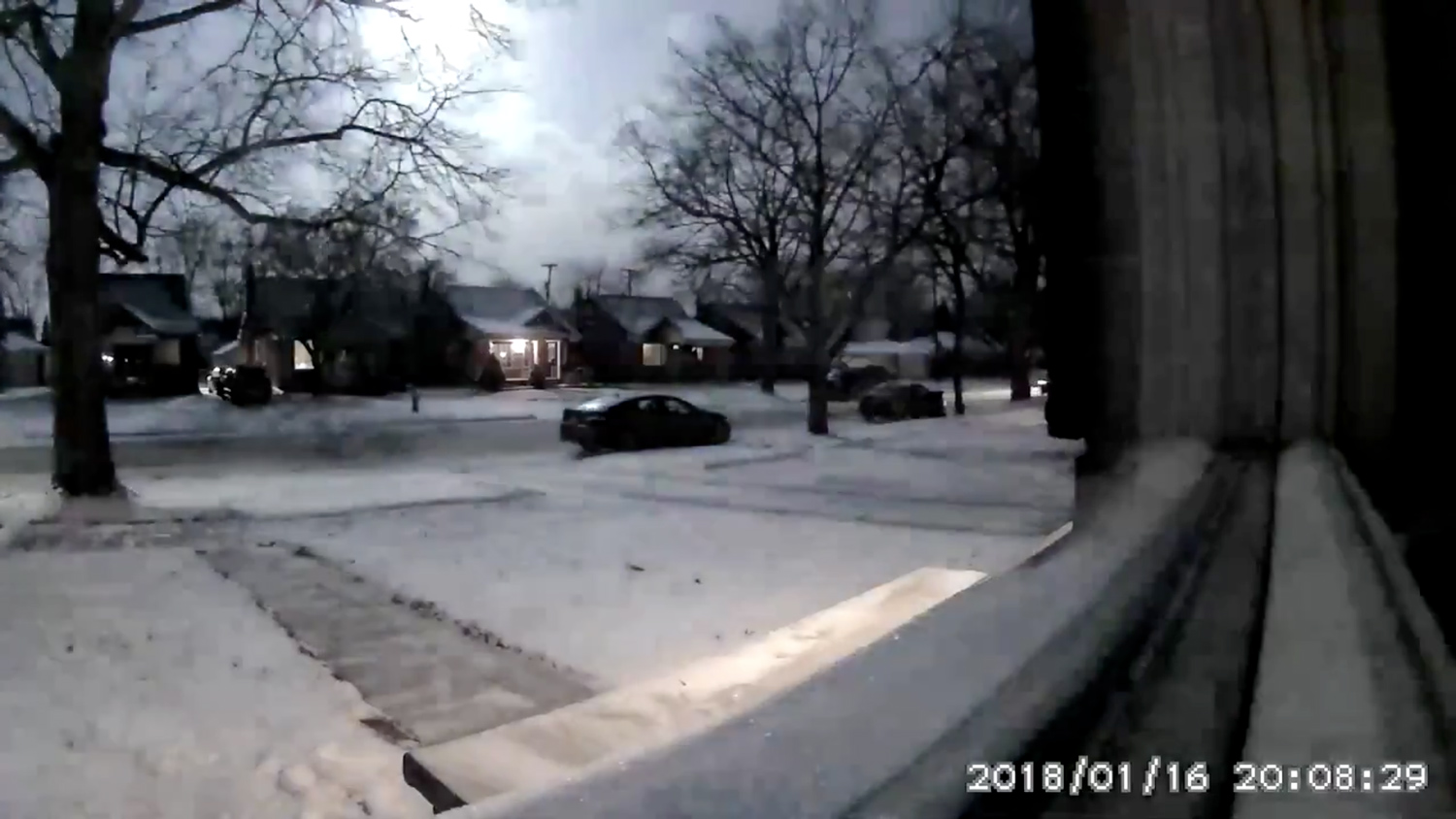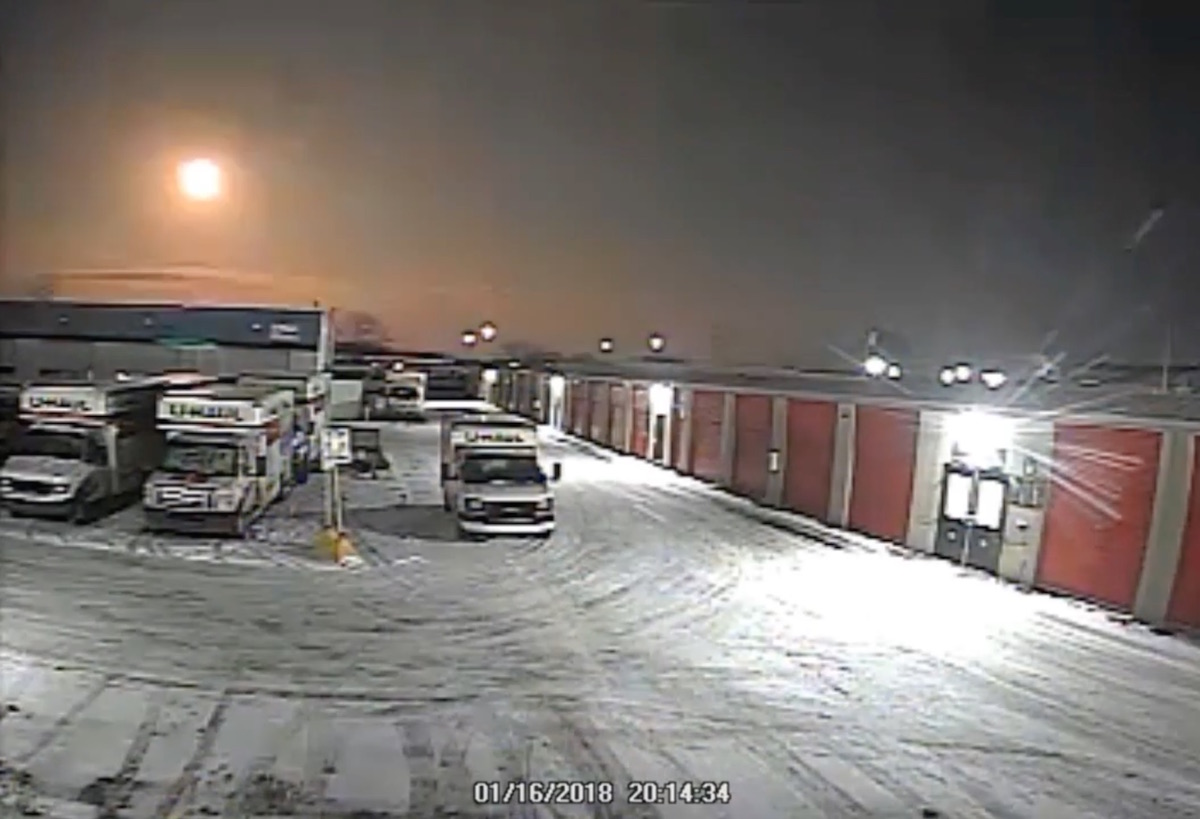Small Michigan Meteor Packed a Seismic Punch, Experts Say

The meteor that caused a huge fireball in the skies above southern Michigan Tuesday night (Jan. 16) was only a few feet in size, researchers have said, but its speed was enough to shake the ground as it exploded in the atmosphere.
Reports about the meteor's appearance poured in on social media and to the American Meteor Society overnight. The meteor occurred around 8:10 p.m. CST (9:10 p.m. EST) and registered as a 2.0 magnitude seismic event, according to an alert issued with the National Weather Service.
"This was an explosion in the atmosphere, not an earthquake, and it produced a seismogram that is very different from what you get from a small, regional earthquake," Larry Ruff, a seismologist at the University of Michigan, said in a statement from the university. "Seismologists who are experienced enough can tell that it's not an earthquake because the character is very different." [Photos: Hunting Meteorites from Florida Fireball in Osceola]
Ruff oversees a seismic station at Ann Arbor on the University of Michigan campus, and has been working there since 1982. He said in 35 years, he's never seen an atmospheric event produce this strong of a seismic signature.
David Gerdes, an astrophysicist at the University of Michigan, said Earth gets hit by about 1,000 visible meteors every second, but most of these objects are only the size of sand grains.
"Meteors that penetrate deep enough into our atmosphere to produce the large visible and audible burst like we experienced last night come from objects with diameters of about one meter or more, and are more rare," Gerdes said in the statement.
"Last night's event was recorded by dashboard cameras, security cameras, lightning sensors, and seismological sensors from many locations," he added. "These data will help us form a much better picture of this object's size and trajectory, and if and where any fragments reached the Earth."
Breaking space news, the latest updates on rocket launches, skywatching events and more!
No hazards from this meteor
While the meteor was wowing the public across Michigan, Michael Liemohn, also at Michigan — who studies space hazards such as solar wind — spotted the meteor from his car. He said the object in the atmosphere (also called a "bolide") was much smaller than the 56-foot (17-meter) object that shattered over Chelyabinsk, Russia, in 2013, injuring hundreds of people and causing property damage.
"This was probably a rock of only a few feet in diameter," he said in the same university statement. "The primary way that a bolide can be dangerous is broken glass. Weird, but true. They are moving at thousands of miles per hour through the atmosphere, so, supersonic speeds, and they create a sonic boom that can reach the ground. If this bolide had been a slightly bigger rock, then it could have broken windows."
Researchers at the university said that an object of 1 meter (3.2 feet) in size hits Earth every few months, a 10-meter (33-foot) object strikes every few years or decades, and a 100-meter (330-foot) object roughly every few thousand years.
Liemohn added that NASA's Planetary Defense Coordination Office (PDCO) and its partner telescopes are designed to look at very large asteroids, especially those that are bigger than a house. However, smaller objects tend to escape everyone's notice because they are too small to see until they are close to Earth. While PDCO hasn't spotted an imminently threatening object so far, NASA is working on technology to deflect a potentially hazardous asteroid — such as using lasers, or shooting it with a missile.
Ted Bergin, who chairs the astronomy department at Michigan, researches the molecular origins of life and examines how stars and planets are formed. He pointed out that meteors, while small, have an important role in helping astronomers understand the history of the solar system and the universe.
"These rocks are the leftovers of planet formation — they never made it into a planet like our own," he said. "Because of that, they contain inside them the history of our own origins and can tell us how a planet like our own was born."
Editor's note: If you captured an amazing photo or video of the Michigan meteor and would like to share it with Space.com for a story or gallery, send images and comments to: spacephotos@space.com.
Follow us @Spacedotcom, Facebook and Google+. Original article on Space.com.

Elizabeth Howell (she/her), Ph.D., was a staff writer in the spaceflight channel between 2022 and 2024 specializing in Canadian space news. She was contributing writer for Space.com for 10 years from 2012 to 2024. Elizabeth's reporting includes multiple exclusives with the White House, leading world coverage about a lost-and-found space tomato on the International Space Station, witnessing five human spaceflight launches on two continents, flying parabolic, working inside a spacesuit, and participating in a simulated Mars mission. Her latest book, "Why Am I Taller?" (ECW Press, 2022) is co-written with astronaut Dave Williams.



